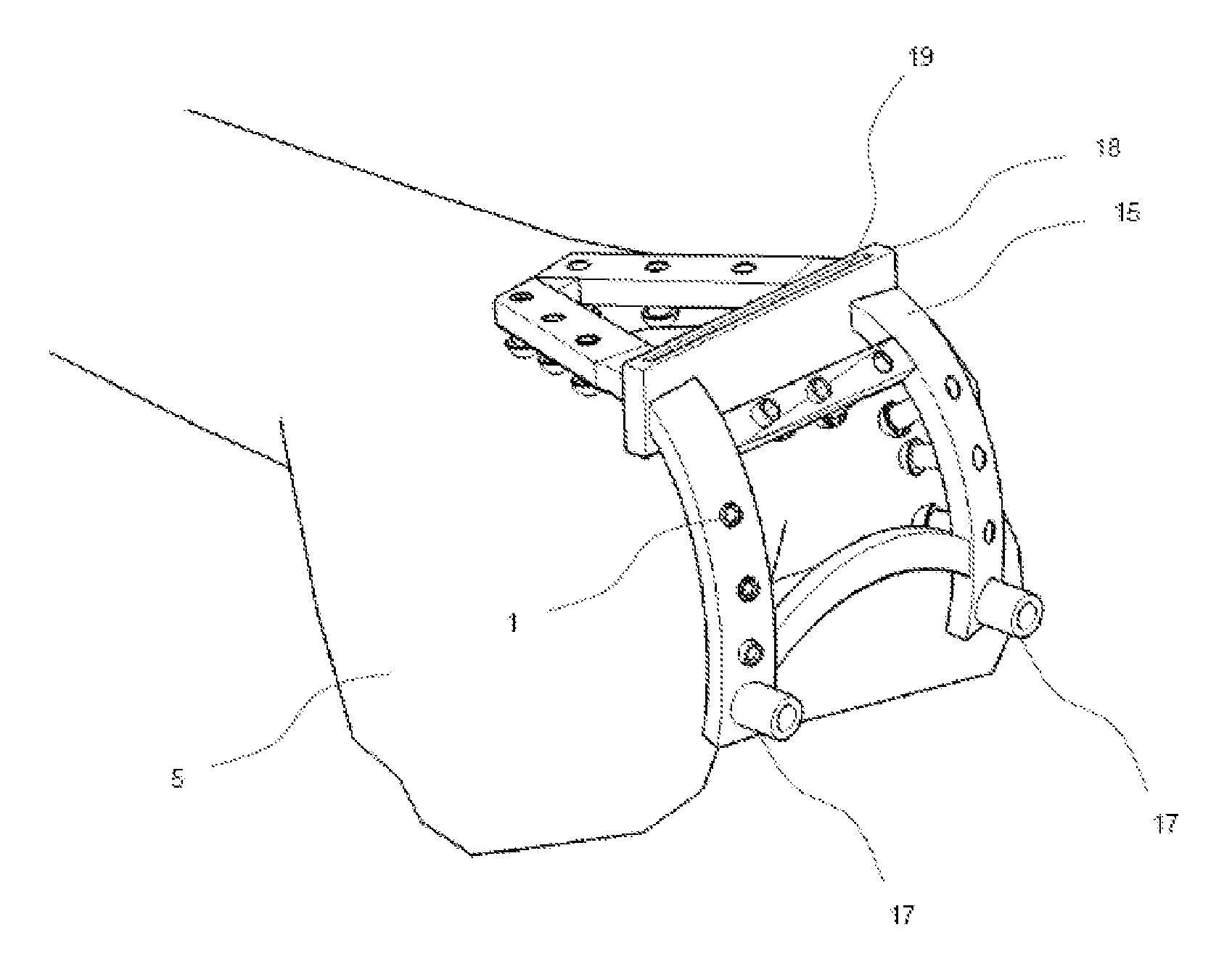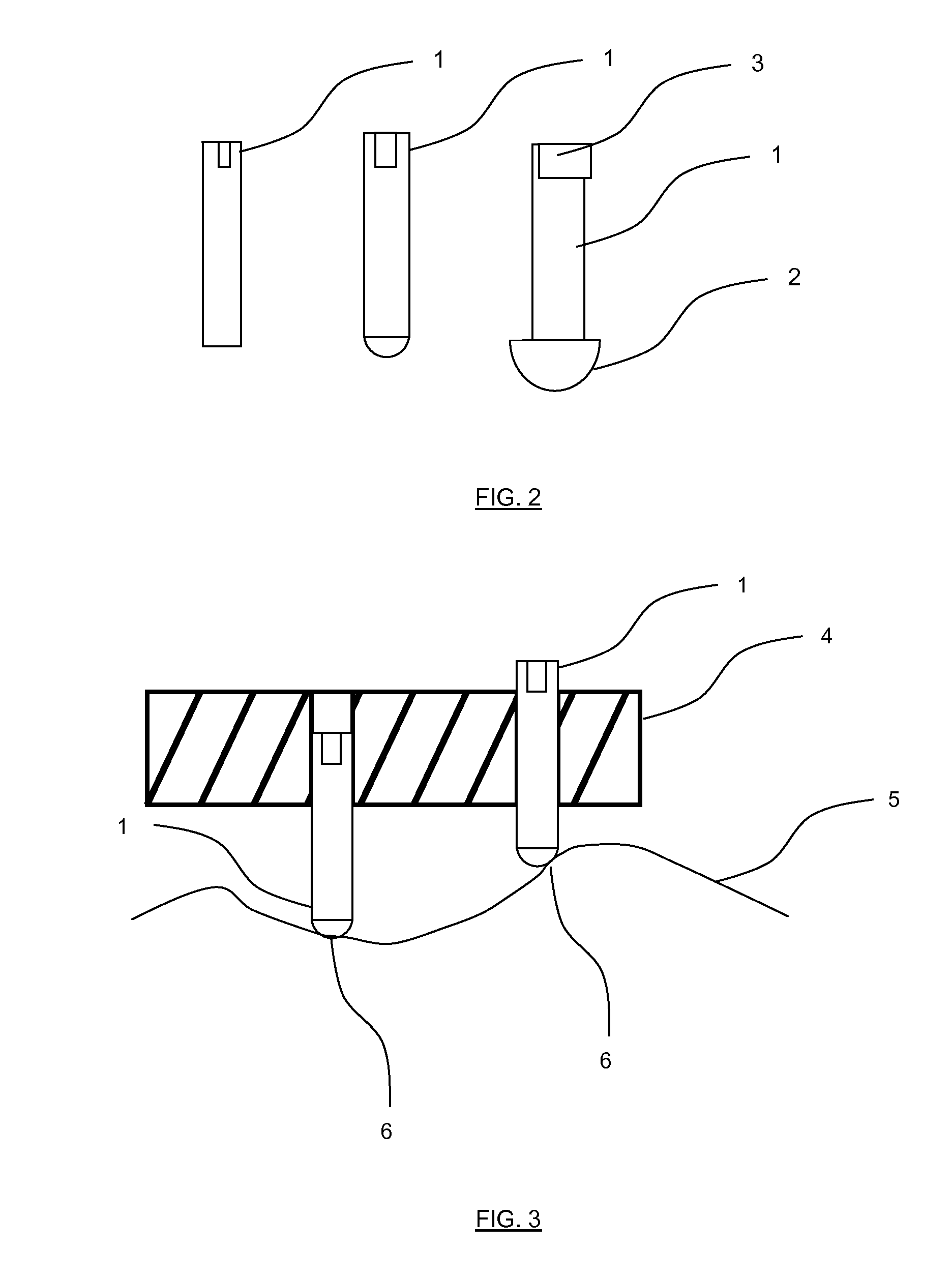Adjustable guide in computer assisted orthopaedic surgery
a technology of orthopaedic surgery and adjustable guide, which is applied in the field of adjustable guide in computer assisted orthopaedic surgery, can solve the problems of generating time and logistics problems, adding time and cost to the procedure, and major drawbacks, and achieves easy reading and adjustment, affecting the longevity of the implant, and more flexibility in the adjustment mechanism
- Summary
- Abstract
- Description
- Claims
- Application Information
AI Technical Summary
Benefits of technology
Problems solved by technology
Method used
Image
Examples
Embodiment Construction
[0044]The tracking technology of trackers and navigation systems is independent of the invention, provided that the trackers are tracked in real-time by the navigation system. It includes, but is not limited to optical active technology, with active infrared Light Emitting Diodes (LEDs) on trackers, optical passive technology (with passive retro-reflective markers on trackers), mechanical passive arms with encoders, radio-frequency measurements, gyro meters and accelerometers or magnetic technology. Those tracking technologies are known as prior art of navigation systems for surgery.
[0045]FIG. 1 presents the successive steps of the method according to the invention.
[0046]The first step of the method consists in acquiring patient images that can be CT or MR images and then performing a surgical planning of an implant position on those images using a computer with display and man machine interactions. The patient images can also be provided by intra-operative three-dimensional fluoros...
PUM
 Login to View More
Login to View More Abstract
Description
Claims
Application Information
 Login to View More
Login to View More - R&D
- Intellectual Property
- Life Sciences
- Materials
- Tech Scout
- Unparalleled Data Quality
- Higher Quality Content
- 60% Fewer Hallucinations
Browse by: Latest US Patents, China's latest patents, Technical Efficacy Thesaurus, Application Domain, Technology Topic, Popular Technical Reports.
© 2025 PatSnap. All rights reserved.Legal|Privacy policy|Modern Slavery Act Transparency Statement|Sitemap|About US| Contact US: help@patsnap.com



